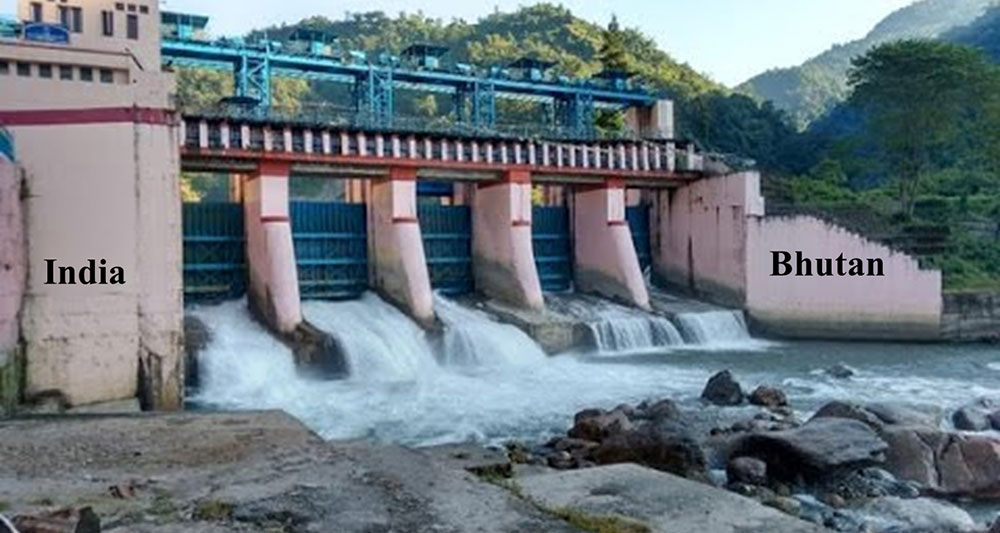The modern-day legacy of the close and mutually benefitting Bhutan India relationship begins with the visit by Pandit Nehru in September 1958. The seed of the visit and friendship germinates and fruits into the beginning of Bhutan’s first five-year plan in 1961. Today, India Bhutan relationship transcends diplomatic boundaries shaping the lives and careers of thousands of people from the two countries. India’s support in the development of the hydropower sector in Bhutan lies at the heart of this bilateral cooperation. The cooperation in the hydropower sector is full of opportunities and has been recognized by both Bhutan and India as being mutually beneficial.
Therefore, it is not surprising that the modern-day hydropower projects that dot the sacred landscape of Bhutan are woven with inspiring stories of cooperation and teamwork between the two countries. The oldest and the modest Jaldhaka Hydro Power Project and the majestic Bindu barrage built at the Bhutan India border in Samtse -West Bengal is a metaphor to the foundations, flow and glow of the strategic partnership.
Often unheard in comparison with the megawatts and magnitude of the bigger projects like the Chuhkha, Tala and Punatshangchu, the Jaldhaka Hydel Power Project is one of the oldest hydel projects of India. It is the first Indo-Bhutan hydropower cooperation that began in 1961 and was commissioned in 1967 with a total installed capacity of 27 MW. What makes the project truly a showpiece of the Bhutan India friendship is that the majestic dam at Bindu is built right on the Bhutan India boundary where three rivers namely of Jaldhaka Khola, Thoday Khola and Bindu Khola converge. The power project is run of river water and the left foundation of the dam is built in the Bhutanese territory while the right foundation falls in the Indian territory. The pond is built on the Bhutanese side and the powerhouse is located on the Indian side. It is operated by the West Bengal State Electricity Board and for many years the neighbouring areas of Bhutan like Sibsoo received electricity from the project.
The project is a 116km by road drive from Phuentsholing via West Bengal and NH 17. It can be accessed via an hour downhill walk from Tendruk town in Samtse. Before the Sipsu Tendruk highway was built, the hydro project and the town located beside the dam was a lifeline and the nearest road head for the Bhutanese settlements of Tendruk, Kuchin, Bara, Dubey, Lingtam, Chamghu , Khongkha and to the Royal Bhutan Army wing based in Tendruk. Jaldhaka and Bindu was the place where Bhutanese villagers traded their agricultural products like cardamom, ginger, and oranges. The road head and the project facilitated the construction of facilities like Bara Junior High School amongst others on the Bhutanese side. Bindu was also the gateway for the people from nearby Bhutanese villages to go to cities like Phuentsholing, Kalimpong and Siliguri for education, medical treatment, and business. On the Indian side, the project brought connectivity and tourism to the settlements like Bindu, Thoday, Parangtar and Jhalung. Nowadays the Bindu barrage and its thrilling water discharge beside the road and the area is a major tourist attraction and a holiday spot for people from North Bengal.
Today, Jaldhaka Hydro Power Project resonates more than ever as the finest example of transboundary water cooperation when the world and the region are embroiled in transboundary water sharing issues, differences, and conflicts. As we celebrate the 75th anniversary of India’s independence it will be an engineering and strategic pilgrimage for the policymakers to visit and pray at the foundations and facilities at the very source of where this momentous journey began. The historic Jaldhaka Hydro Project awaits facelifting and a fresh coat of paint in the national colours of Bhutan and India to pay homage to the energy of the landscape, to our natural resources, to our leaders, and the people of Bhutan and India. The Jaldhaka project deserves recognition for laying the foundation of the Bhutan- India Power Partnership.
Contributed by
Dhrubaraj Sharma
QUT Design Lab


